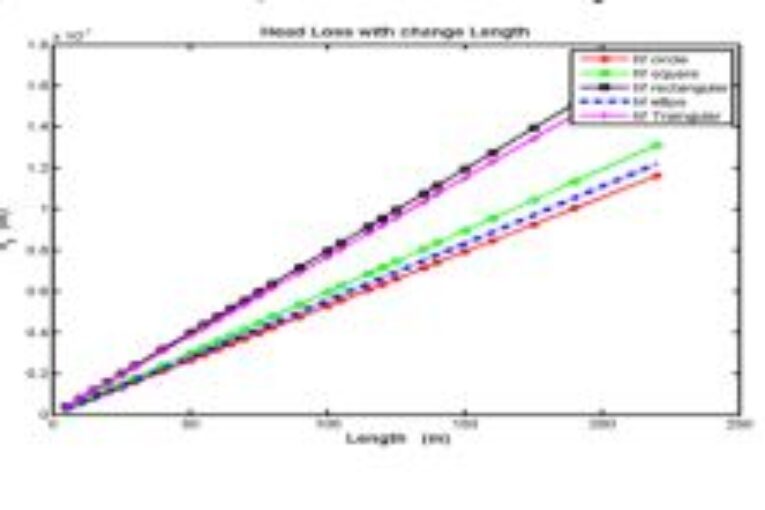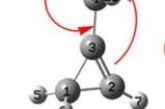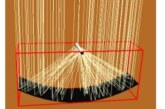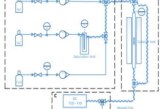
Authors: Abdullah A. Alshorman, La’aly A. Al-Samrraie, and Khalideh Al bkoor Alrawashdeh
DOI: https://doi.org/10.48103/jjeci5112022
JORDANIAN JOURNAL OF ENGINEERING AND CHEMICAL INDUSTRIES (JJECI)
Pages: 82-90
Abstract
This simulation study has been designed to study and scale the head losses (hf) through internal flow passages with different five cross-section areas: these are circular, elliptical, rectangular, square and triangular cross-sectional passages. Those equivalent hydraulic diameters (Dh) were modelled for each shape to be used in head loss calculations and analysis using the Darcy-Weisbach equation. These equations formed the main structure of the mathematical model of this study to enable the building of the subsequent computerized model using MATLAB® software. Five major parameters were considered for head losses investigation and scaling for each pipe shape, these are the pipe length
(L), the hydraulic diameters (Dh), friction coefficient (f), volumetric flow rate or discharge (Q) and mass flow rate (dm/dt).
The results showed that head losses of non-circular pipes have relatively higher head losses than that of circular pipes, also the scaling head losses were strongly affected by the pipe geometry and shape, the flow characteristics and fluid properties. Furthermore, the head losses have been severely inversely affected by low pipe hydraulic diameter (Dh 0.10 m) and then be likely to be the same at higher pipe diameter (Dh ≥ 0.25 m) for all pipe shapes. Also, the most
recommended pipe shapes for lower head losses next to the circular pipe are elliptical and square, while the less recommended are triangular and rectangular shapes respectively.
Paper type: Research paper
Keywords: pipes, head losses, geometrical shapes, flow characteristics, fluid characteristics.
Citation: Alshorman A., L., Al-Samrraie, and K. Alrawashdeh “Analysis of Effect of Piping Geometrical Shape on Major Head Losses in
Pipe”, Jordanian Journal of Engineering and Chemical Industries, Vol. 5, No.3, pp: 82-90 (2022).



